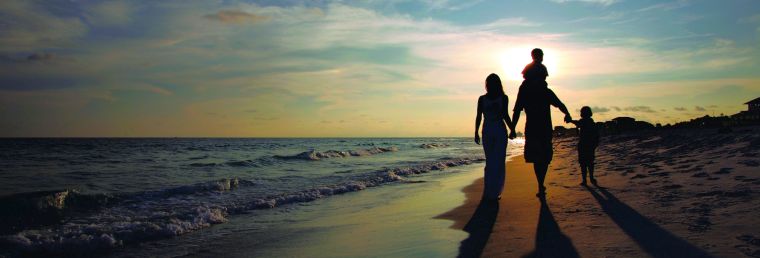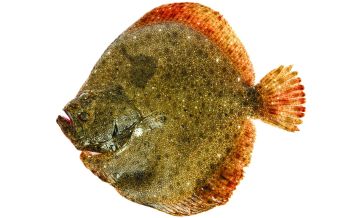Focus: creation news and views
‘Same-sex parenting’ research shock
The oft-heard popular social-science assertions that ‘gay parents’ are just the same as—or even better than—traditional mother-father, married parents has been dealt a blow by recent research. Mark Regnerus, a sociology professor at the University of Texas at Austin, looked at the lives of nearly 3,000 American adults (ages 18–39) raised in different types of ‘family arrangements’. The results showed, among other things, that those raised under ‘same-sex parents’ had lower income levels, poorer mental and physical health, and more troubled personal relationships than those raised by ‘intact bio family’ parents.

With the data “overturning conventional wisdom”, Regnerus wrote that “the empirical claim that no notable differences exist must go”. Rather, his New Family Structures Study “clearly reveals that children appear most apt to succeed well as adults—on multiple counts and across a variety of domains—when they spend their entire childhood with their married mother and father, and especially when the parents remain married to the present day.”
- Study: Children fare better in traditional mom-dad families, washingtontimes.com, 10 June 2012.
- How different are the adult children of parents who have same-sex relationships? Findings from the New Family Structures Study, Social Science Research 41:752–770, 2012.
- Studies challenge widely held assump tions about same-sex parenting, deseretnews. com, 9 June 2012.
Fish schools beat traffic chaos
“Some of the most incredible sights in nature happen when animals form into groups and move together as if choreographed,” said the University of Sydney’s James Herbert-Read. He and his co-workers studied fish shoal behaviour. Because schools of fish rarely suffer from crashes or congestion, the rules they use could also potentially be applied to robotic systems to solve traffic problems.
“It turns out the amazing synchronised swimming that fish in shoals exhibit is actually caused by each fish using very simple rules to respond to its neighbours,” Herbert-Read explained. The rules include ‘accelerate towards a neighbour that is far away from you’ and ‘decelerate when a neighbour is right in front of you’. That’s just what good drivers do in traffic—decelerate when someone’s in front of us and accelerate if there’s someone about to bump into us from behind.
“If you could engineer a system where each car knew where each car was and they could respond to each other and communicate with each other, you would avoid traffic problems,” said Herbert-Read. “And we’re starting to see that now, with sensors fitted in the newer cars coming out.”

- Fish may hold secret to beating traffic chaos, abc.net.au, 9 November 2011.
- Inferring the rules of action of shoaling fish, PNAS 108(46):18726–18731, 2011.
Radiometric dating tricky and disputed
It’s not often that secular researchers will admit that one of their most cherished, supposed ‘proofs’ of billions of years is anything less than definite. But in an article on a new design for a portable ‘geochronometer’, perhaps destined for use in missions to other planets, the science journal Nature admits that radiometric dates are “some of the trickiest, most delicate and most disputed measurements on Earth.” The sub-heading is blunt: “Dating features on the moon and Mars is guesswork.”
Radiometric dating techniques are given much weight and authority by secular scientists as being quite secure and trustworthy, as if there are fixed ‘clocks’ in rocks and all we must do is carefully read them. But this fond idea (for secularists) is based on (blind) faith and circular reasoning. The admission that “we really struggle to get these ages” doesn’t inspire much confidence in the results. (See also creation.com/dating.)
- Planetary science: The time machine, nature.com, 25 July 2012.
Moon origins problem
Moon rock isotopes of oxygen are just like those of Earth rocks. This is a major difficulty for the idea that the moon formed as a result of a collision between Earth and an asteroid or other object (which have very different oxygen isotope compositions to Earth).
However, supporters of the giant impact theory of our moon’s origin have defended the idea by suggesting that the Earth could have exchanged oxygen gas with the magma disk that (supposedly) formed the moon after the collision, which would then explain the similar isotope levels.
But new research has found that titanium isotope levels in moon rocks are just the same as Earth’s, and different from elsewhere in the solar system. And as titanium has a much higher boiling point than oxygen, the researchers concede this is a problem for the giant impact/isotope exchange theory of the moon’s origin. There’s also the difficulty of explaining where all the angular momentum went if the moon formed by asteroid collision with Earth. (See also creation.com/moonage.)
- Findings cast doubt on moon origins, ScienceNOW, 25 March 2012.
Clays on Mars not formed by water
Clays found in the southern hemisphere of Mars in 2005 have been considered evidence that the planet was covered in water, early in its history. Because they were rich in iron and magnesium, they were assumed to have formed from rocks decomposed by liquid water.
To the Mars scientist, finding water would be as exciting as finding life. They overlook the complex, mind-blowing machinery within a living cell, and also that biologists say they have no idea how life could possibly form by itself. They also overlook that water actually hinders the chemical reactions needed to make large biomolecules (see creation.com/polymer).
Now, in an article in Nature Geoscience, researchers from a joint French-US team are questioning that the clays were formed by water. They say they are of a magmatic origin, similar to clays formed by volcanoes on Mururoa Atoll in the South Pacific. They have not dismissed the possibility of water on Mars altogether, but one commentator said, “The period of time favorable to the emergence of life on Mars may have been much shorter than thought.”
- Martian Clays Were Not All Formed by the Action of Liquid Water, www.sciencedaily.com, 10 September 2012.
- Magmatic precipitation as a possible origin of Noachian clays on Mars, Nature Geoscience, 9 September 2012.
Foxes migrated on ice bridges

Researchers, led by scientists at Durham University, UK, say arctic foxes migrated to Iceland across bridges of sea ice during the Little Ice Age. That was in fairly recent historical times between 200 and 500 years ago.
Temperatures dropped across much of Europe and North America during the Little Ice Age. Rivers like the Thames through London often froze in winter and were popular for ice skating.
Foxes had also crossed on sea ice in the distant past during the previous (post-Flood) ice age many thousands of years ago. Warming temperatures and melting ice bridges isolated the foxes until new sea ice joined the island during the Little Ice Age, when a new population of animals migrated.
This can help us understand how some animal populations could have dispersed from Noah’s Ark in the Middle East. The formation of ice bridges during the post-Flood Ice Age about 4,000 years ago provides another plausible mechanism.
- Little Ice Age led to migration of island hopping arctic foxes, www.sciencedaily.com, 12 September 2012.
- The impact of past climate change on genetic variation and population connectivity in the Icelandic arctic fox, Proceedings of the Royal Society B: Biological Sciences, 12 September 2012.
Chalk it up to the Flood and its algal blooms

A satellite photograph published by the University of Michigan, shows green pollution in Lake Erie, which they describe as the worst algal bloom in the lake in decades.
In the 1950s, algal blooms were common due to high levels of phosphorus from farms, sewage, and industry. The phosphorus-rich nutrients promoted the bloom, but improved environmental practices in the 1970s reduced their occurrence. However, high phosphorus levels have returned, promoting a giant bloom in 2011.
Algae blooms kill fish, clog harbours, and are sometimes poisonous to people. They absorb the oxygen in the water creating dead zones where marine life cannot survive. They can appear very quickly—i.e. within just a few days.
Half way through Noah’s global Flood, conditions emerged that were conducive to algal blooms. The warm water, rotting vegetation, and decomposing animals produced the necessary nutrients for enormous blooms, which left their record as the vast chalk deposits found across the earth. It all happened quickly, contrary to the supposed millions of years of diatomaceous accumulation. (See creation.com/chalk.)
- Climate change likely to increase Lake Erie algae blooms and ‘dead zones’, U-M ecologist says, University of Michigan News Service, 11 September 2012.

Rewriting the ‘big bang’—a fluid idea
University of Melbourne physicists say the standing evolutionary model for the origin of the universe, the ‘big bang’, needs to be rewritten.
“The biggest problem with the big bang model is the bang itself,” says theoretical physics researcher James Quach. “At the bang, physics breaks down. The model cannot make any predictions at what occurs at the big bang. You can’t use any of the mathematics (or) any of the theories.”
So the researchers suggest that instead of thinking of the start of the universe as a big bang, it’s better to imagine it as a cooling of water into ice.
“Think of the early universe as being like a liquid,” says Quach. “Then as the universe cools, it ‘crystallises’. The reason we use the water analogy is water is without form. In the beginning there wasn’t even space, space did not exist because there was no form.”
The researchers have published a paper in Physical Review D proposing that it may be possible to view ‘cracks’ in the universe. If so, they say that would support their condensed matter theory of ‘Quantum Graphity’ [sic], which suggests space is made up of indivisible building blocks, similar to the way that pixels make up images on a computer screen.
Hardly surprising that alternative theories of origins are being sought, given the problems with ‘big bang’ notions—see creation.com/bigbangblast.
- Aussie researchers rewrite Big Bang theory, news.ninemsn.com.au, 21 August 2012.
- Domain structures in quantum graphity, Physical Review D, 1 August 2012.
- Big Bang theory under threat from quantum graphity breakthrough, news.com.au, 20 August 2012.
Bacteria baffle boffins
Scientists have found living bacteria 30 metres (100 feet) deep in sea-floor sediments. According to the long-age interpretation, the bacteria are living in 86-million-year-old clay. The oxygen levels are extremely low and the researchers are mystified as to how these (aerobic) bacteria could have survived at such a slow rate of activity for so long.
Of course if the sediments were laid down near the end of Noah’s Flood, they are not millions of years old and the problem is largely solved. (This discovery backs up the evidence from sea-floor sediment nodules of manganese that the sediments were deposited very quickly, not over eons of time: creation.com/manganese-nodules.)
- Aerobic microbial respiration in 86-million-year-old deep-sea red clay, Science 336(6083):922–925, 18 May 2012.
- Bacteria alive (more or less) in 86-million-year-old seabed clay, Physorg.com, 18 May 2012.
Sudden dinosaur weight loss

Dinosaurs may have weighed around a quarter of what was once believed. Researchers from the University of Manchester have developed a new way to estimate more accurately the weight of an animal from its fossil bones.
Earlier techniques involved artists’ reconstructions to estimate the body volume, then using the weight of an equivalent volume of water. Using a laser scanner and highspeed computing, the British team first created a 3D image of the skeletons of known animals with known weights. They then calculated the minimum amount of skin necessary to cover the skeletons, and used estimates of the average density of modern-day tissues to work out the minimum weight of just the skin and bones.
It turned out that when this calculation was done on modern animals such as reindeer, elephants, polar bears and giraffes, in each case increasing this ‘estimated skin and bone’ weight by 21% almost exactly equalled their actual measured weight.
They then scanned the reconstructed almost complete skeleton of a large dino now classified as Giraffititan brancai (formerly Brachiosaurus brancai) from the brachiosaurid created kind. They estimated that if the same formula applied, it would have weighed about 23 tonnes in life. Previously, it had been believed to weigh up to 80 tonnes.
- Dinosaurs ‘much lighter than previously thought’, www.telegraph.co.uk, 6 June 2012.
- Minimum convex hull mass estimations of complete mounted skeletons, Biology Letters, 6 June 2012.
Moral code affects behaviour
In an article in the Wall Street Journal entitled “Why we lie”, Dan Ariely, author of the new book The (Honest) Truth About Dishonesty, overturns popular modern-day ideas about morality. He recounts how experiments he and colleagues performed at the University of California showed conclusively that cheating does not correspond to the established rationalist model of human behaviour. That is, the idea that people lie and cheat if the perceived benefits (say, money) outweigh the costs (the possibility of getting caught and punished). Instead, Ariely’s team found that simply reminding people of the 10 Commandments had a dramatic effect on their behaviour.
In one experiment, Ariely and his co-researchers split 450 participants into two groups. He recalls:
“We asked half of them to recall the Ten Commandments and the other half to recall 10 books that they had read in high school. Among the group who recalled the 10 books, we saw the typical widespread but moderate cheating. But in the group that was asked to recall the Ten Commandments, we observed no cheating whatsoever.”
No cheating whatsoever—a dramatic effect indeed. And that wasn’t all. “We even reran the experiment on a group of self-declared atheists, asking them to swear on a Bible, and got the same no-cheating results yet again.”
Ariely concludes: “This experiment has obvious implications for the real world. While ethics lectures and training seem to have little to no effect on people, reminders of morality—right at the point where people are making a decision—appear to have an outsize effect on behavior.” Or more simply, in the TV series NCIS, the character Dr Donald ‘Ducky’ Mallard (played by David McCallum) was asked to explain the difference between ethics and morals. Ducky anwered, “Well the ethical man knows he shouldn’t cheat on his wife, whereas the moral man actually wouldn’t.”

- Why we lie, online.wsj.com, 26 May 2012.

Flatfish claims rehashed
In adult flatfish, both eyes are on the same side of its body. (As they mature, one eye progressively migrates over the top of the fish’s head.) Evolutionists have traditionally struggled to explain how this could evolve. Nevertheless, a fossil ‘dated’ 50 million years old called Heteronectes has for some time been hailed as the ‘missing link’. One eye of this fossil fish is near the top of the head—in between the conditions of ordinary fish and flatfish. Heteronectes has received renewed media interest recently due to a recent reanalysis of its anatomy. And as with the first round of publicity, it has again been used to parade evolution as ‘fact’.
This is yet another case of assuming evolution in order to prove evolution. One can explain Heteronectes numerous ways without evolution. Perhaps it simply was not a fully adult specimen. Or it may have had a mutation that stopped the eye from migrating completely during the fish’s development. Heteronectes could also be an extension of the natural range of flatfish variation. Spiny turbots are known for being rather different from most other flatfish in a number of recognizable ways, and Heteronectes shares many of the same traits, including incomplete eye migration. Non-evolutionary explanations abound and yet remain unexplored. Why? Evolution is an assumption, not a conclusion.
- Missing link for wonky-eyed fish discovered, www.livescience.com, 25 June 2012.
- Osteology of Heteronectes chantey (Acanthomorpha, Pleuronectiformes), an Eocene stem flatfish, with a discussion of flatfish sister-group relationships, Journal of Vertebrate Paleontology 32(4):735–756, 2012.
- The evolutionary origin of flatfish asymmetry, Nature 454(7201):209–212, 2008.
Cellular complexity “nearly unbelievable”

To model the simplest microbe in the world,” ran The Atlantic’s headline, “you need 128 computers.”
Actually, it’s even more dramatic than that. It was a huge undertaking by Stanford University researchers even “to partially simulate” the microbe, Mycoplasma genitalium, which has ‘only’ 525 genes. As co-researcher Markus Covert explained, “running a simulation for a single cell to divide only one time takes around 10 hours and generates half a gigabyte of data. I find this fact completely fascinating, because I don’t know that anyone has ever asked how much data a living thing truly holds. We often think of the DNA as a storage medium, but clearly there is more to it than that.”
As The Atlantic reported, “the depth and breadth of cellular complexity has turned out to be nearly unbelievable”, with critics of the researchers’ ‘simulation’ complaining that it’s only a fraction of what will eventually be required to consider the simulation realistic.
And the researchers admit that more complex bacteria, e.g. E. coli with its 4,288 genes, present far greater simulation challenges, as the number of molecular interactions multiplies enormously.
Note that the researchers are only doing computer simulations—in no way can this be considered the same thing as building something truly living that mimics what the ‘simplest’ living cell can do.
The words of joint lead co-researcher Jayodita Sanghvi are apt: “You don’t really understand how something works until you can reproduce it yourself.”
- To model the simplest microbe in the world, you need 128 computers, theatlantic.com, July 2012.
- Stanford researchers produce first complete computer model of an organism, news.stanford. edu, 19 July 2012.
- In first, software emulates lifespan of entire organism, The New York Times, 20 July 2012.
- A whole-cell computational model predicts phenotype from genotype, Cell 150:389–401, 2012.




















Readers’ comments
Comments are automatically closed 14 days after publication.